How Does Lamb Taste Compared To Beef? Lamb offers a distinct, slightly gamey flavor, while beef is generally milder and more familiar. COMPARE.EDU.VN provides a detailed analysis, exploring flavor profiles, nutritional values, and environmental impacts to help you choose the best option for your culinary preferences. Dive into the world of red meat comparisons for savvy decisions, understand the nuances of flavor intensity, and discover protein source insights.
1. Protein Popularity: Lamb vs. Beef
Beef consumption in the United States significantly outweighs lamb. While the average American consumes nearly 60 pounds of beef per year, lamb consumption hovers around just over a pound. This disparity reflects beef’s wider availability and familiarity in American cuisine. However, protein intake preferences are evolving, with younger generations showing a greater interest in plant-based alternatives.
2. Nutritional Showdown: Lamb Versus Beef
Lamb and beef share many nutritional similarities, offering comparable amounts of calories, protein, essential vitamins, and minerals. Both are complete proteins, supplying all essential amino acids, and are classified as red meats. However, nutritional profiles can vary depending on the specific cut of meat.
2.1. Key Nutritional Differences
Although both are nutritious choices, slight variations exist. The following table offers a breakdown of the nutritional content in a 3-ounce serving of ground beef and ground lamb:
| Nutrition in a 3 oz portion | Ground Beef | Ground Lamb | Average daily requirements |
|---|---|---|---|
| Calories | 250 | 280 | Varies |
| Protein | 18 g | 16 g | Varies |
| Fat | 20 g | 23 g | Varies |
| Carbohydrates | 0 g | 0 g | Varies |
| Iron | 2 mg | 1 mg | 18 mg |
| Magnesium | 16 mg | 21 mg | 350 mg |
| Zinc | 4 mg | 3 mg | 8 mg |
| Vitamin B12 | 2 mcg | 2.5 mcg | 2.4 mcg |
| Choline | 67 mg | 70 mg | 425 mg |
| Niacin | 5 mg | 6 mg | 14 mg |
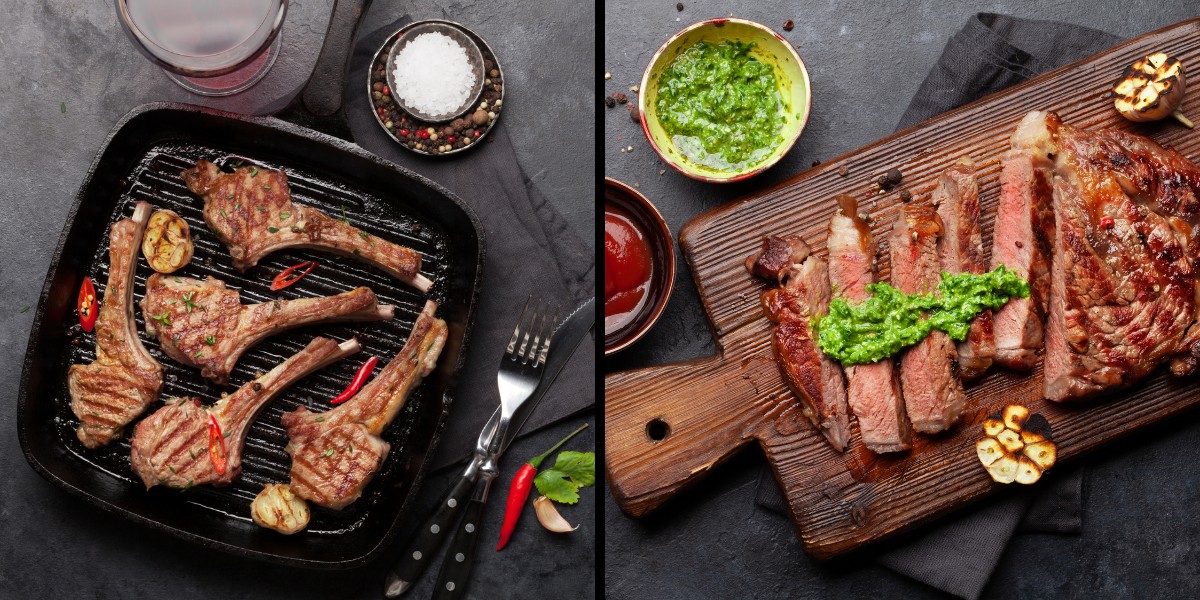
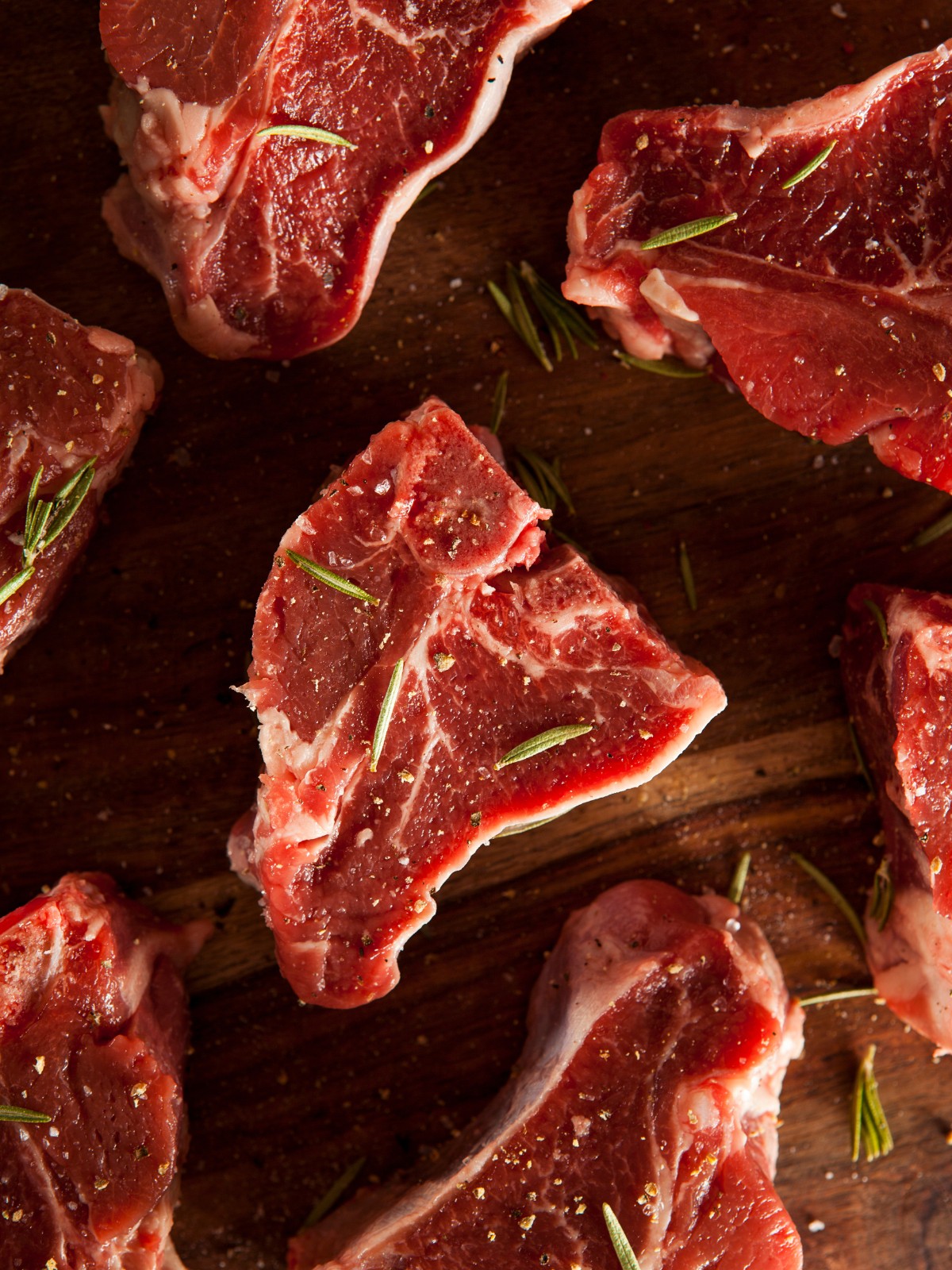
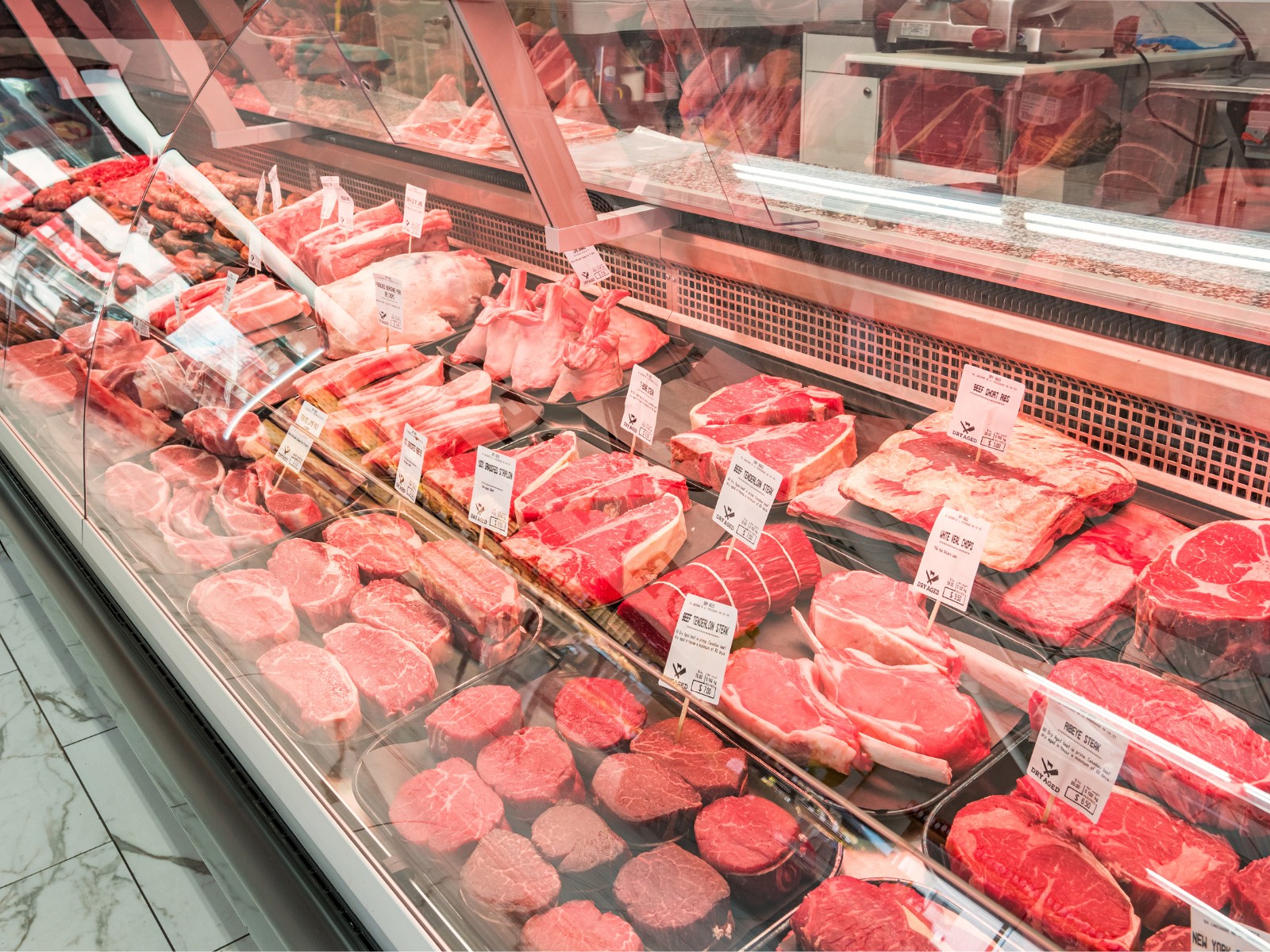
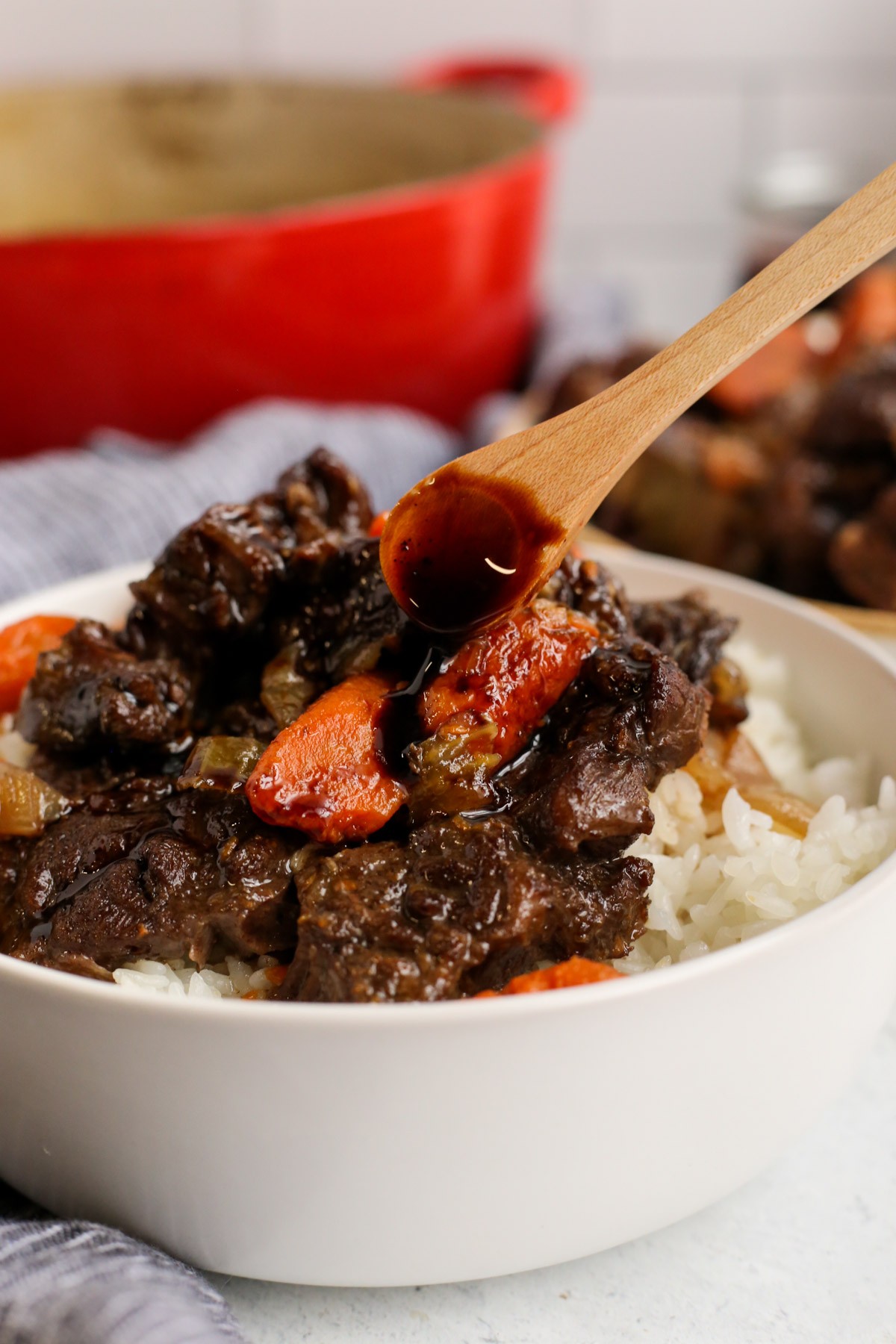
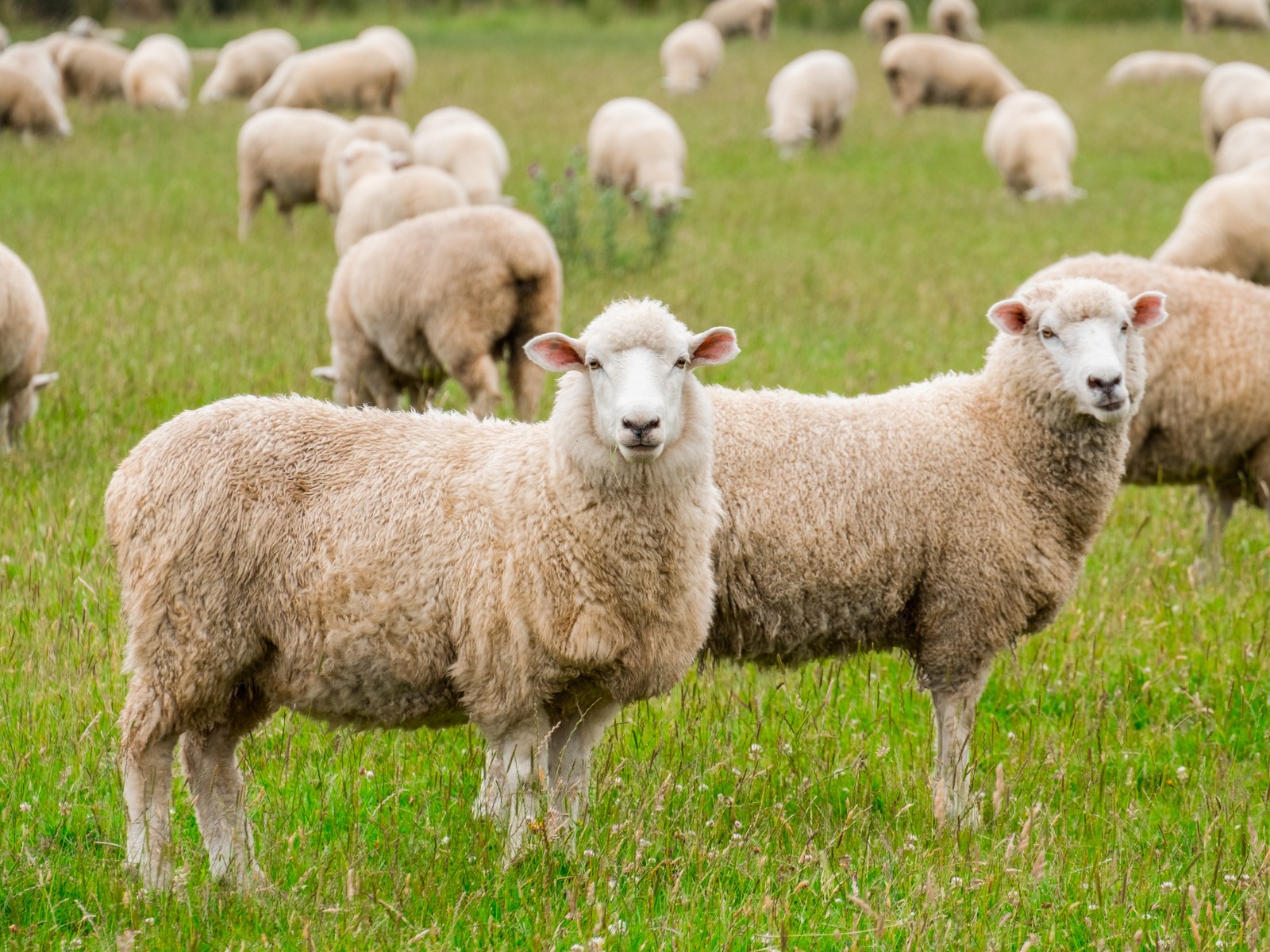
2.2. The Importance of Lean Cuts
Opting for lean cuts of both lamb and beef is recommended to limit saturated fat intake, which is associated with an increased risk of heart disease. However, both meats also contain heart-healthy monounsaturated fats. It’s essential to consider overall dietary patterns and consult with healthcare professionals, especially for individuals with cardiovascular risk factors.
2.3. Grass-Fed vs. Grain-Fed: Nutritional Implications
The diet of the animal significantly impacts the meat’s nutritional composition. Grass-fed animals, including both cows and sheep, tend to produce leaner meat and require longer to reach slaughter weight. Studies indicate that grass-fed beef and lamb may contain higher levels of omega-3 fatty acids compared to their grain-fed counterparts. Some farmers are even experimenting with omega-3-rich feeds to further enhance the nutritional profile of lamb.
3. Environmental Footprint: Beef versus Lamb
Assessing the environmental impact of beef and lamb production involves considering various factors. Farming practices, transportation distances, and land usage all contribute to the overall ecological footprint. Sourcing meat locally can reduce the environmental impact associated with transportation.
3.1. Greenhouse Gas Emissions
Conventional cattle farming is associated with higher greenhouse gas emissions compared to lamb production, though this data encompasses dairy cows as well. Grass-fed farming practices can potentially mitigate greenhouse gas emissions by trapping gases in the soil.
3.2. Water Consumption
Beef production generally requires significantly more water than lamb production. Choosing lamb over beef can contribute to water conservation efforts.
3.3. Waste Reduction Strategies
Purchasing whole animals from local farmers to minimize waste can be an environmentally conscious choice. This approach ensures that all parts of the animal are utilized, reducing overall waste and maximizing resource efficiency.
3.4. The Role of Monoculture Systems
Monoculture systems, characterized by the cultivation of a single crop or animal species, can be more vulnerable to pests and diseases. Diversifying agricultural practices can enhance resilience and reduce environmental risks.
3.5. A Holistic View of Sustainability
While lamb production generally has a lower environmental impact compared to beef, it’s important to consider sustainability beyond food choices. Evaluating the environmental impact of transportation, clothing, housing, and consumption habits offers a more comprehensive approach to sustainable living.
4. Cost Analysis: Lamb versus Beef
The cost of lamb and beef can vary depending on several factors. Lamb is generally more expensive than beef. Organic and grass-fed options typically command higher prices. Purchasing meat from small family farms or farmer’s markets also tends to be more expensive than buying from larger commercial operations. Different cuts of meat, such as a rack of lamb or filet mignon, can significantly influence the overall cost.
4.1. Factors Influencing Price
- Organic vs. Non-Organic: Organic meats typically cost more due to stricter farming practices.
- Grass-Fed vs. Grain-Fed: Grass-fed meats often have a higher price point due to longer rearing times and different feeding methods.
- Source: Small family farms and farmer’s markets may offer higher quality but also higher prices.
- Cut of Meat: Premium cuts like racks or tenderloins are more expensive than ground meat or stewing cuts.
- Fat Content: Ground beef with higher fat content (e.g., 80/20) is generally less expensive than leaner options (e.g., 90/10). Ground lamb doesn’t usually have as much variety in fat percentages.
5. Flavor Comparison: What Does Lamb Taste Like Compared To Beef?
Both lamb and beef offer distinct, earthy flavors. Beef tends to have a more familiar and milder taste, while lamb possesses a slightly stronger, more pronounced flavor often described as gamey or “funky.” This distinct lamb flavor is not indicative of spoilage but rather a characteristic trait.
5.1. Factors Affecting Flavor
- Diet: Grass-fed animals may have a slightly different flavor profile compared to grain-fed animals.
- Fat Content: Fat carries flavor, so fattier cuts tend to have a more intense taste.
- Preparation Method: Smoking, grilling, and roasting can all affect the final flavor.
5.2. Taste Preferences
Ultimately, taste preference is subjective. Those new to lamb may find its flavor more assertive, while seasoned lamb eaters appreciate its unique characteristics. If neither lamb nor beef appeals to your palate, consider exploring alternative protein sources to ensure a well-rounded and enjoyable meal.
6. Sourcing Locally: Finding Local Farmers
Connecting with local farmers can offer numerous benefits, including access to higher-quality meats and support for local economies. Online databases like Local Harvest can help you identify farms in your area. Visiting local farmer’s markets provides an opportunity to sample products and engage directly with farmers. Purchasing meat in bulk from local farmers can be a cost-effective way to stock up on high-quality proteins.
6.1. Benefits of Local Sourcing
- Support Local Economy: Keeps your money within your community.
- Higher Quality: Often raised with more care and attention to detail.
- Transparency: Allows you to learn about the farm’s practices directly.
- Freshness: Can be fresher and less processed than store-bought meat.
6.2. Tips for Finding Local Farmers
- Online Directories: Use websites like Local Harvest to find farms near you.
- Farmer’s Markets: Visit local markets to meet farmers and sample their products.
- Community Groups: Check with local community groups or organizations for recommendations.
7. Recipe Inspirations: Cooking with Lamb and Beef
Both lamb and beef offer culinary versatility. Ground lamb and ground beef are excellent additions to stews, chili, and other hearty dishes. Grilling, roasting, braising, and slow cooking are suitable for both meats.
7.1. Popular Cuts of Meat
Beef:
- Ground beef
- Sirloin steak
- Ribeye steak
- Beef tenderloin
- Beef stew meat
- Skirt steak
- Flank steak
- Boneless beef short ribs
Lamb:
- Ground lamb
- Lamb chops
- Lamb shanks
- Rack of lamb
- Lamb roasts
7.2. Quick Cooking Tips
If cooking grass-fed beef or lamb, be mindful of their leaner composition. Avoid overcooking at high temperatures to prevent a tough, dry texture. Use a meat thermometer to monitor internal temperature. For ground beef and lamb, the recommended internal temperature is 160 degrees Fahrenheit. Steaks, roasts, and chops should reach a minimum internal temperature of 145 degrees.
8. Frequently Asked Questions (FAQs)
8.1. Is lamb healthier than beef?
Both lamb and beef offer valuable nutrients. Lamb may be slightly richer in omega-3 fatty acids, but both provide ample protein, vitamin B12, zinc, and choline.
8.2. What does lamb taste most like?
Lamb has a distinctive taste, often described as slightly gamey or earthy, which sets it apart from beef.
8.3. Why is lamb so expensive?
Lamb production is generally smaller in scale compared to beef production, contributing to its higher price point.
8.4. Can I substitute lamb for beef in recipes?
Yes, lamb can be substituted for beef in many recipes, but be mindful of its stronger flavor, which may require adjustments to seasoning.
8.5. What are the best cuts of lamb for grilling?
Lamb chops and lamb kebabs are excellent choices for grilling, offering a flavorful and tender result.
8.6. What are the best cuts of beef for grilling?
Ribeye, sirloin, and flank steak are popular choices for grilling, known for their flavor and tenderness.
8.7. How do I cook lamb to make it tender?
Slow cooking methods like braising can help tenderize lamb, breaking down tough fibers and resulting in a succulent dish.
8.8. What are the environmental impacts of eating lamb?
Lamb production generally has a lower environmental impact than beef production, particularly in terms of greenhouse gas emissions and water consumption.
8.9. Where can I buy high-quality lamb and beef?
You can purchase high-quality lamb and beef from local farmers, farmer’s markets, specialty butcher shops, and reputable grocery stores.
8.10. What are some easy lamb recipes for beginners?
Ground lamb recipes like lamb burgers or shepherd’s pie are easy starting points for those new to cooking with lamb.
9. The Verdict: Beef or Lamb?
The choice between beef and lamb is not a matter of one being definitively superior. Both meats offer unique qualities and can be part of a balanced diet.
9.1. Key Considerations
- Taste Preference: Consider your personal preference for the distinct flavors of each meat.
- Budget: Lamb tends to be more expensive than beef, so factor in your budgetary constraints.
- Environmental Impact: Lamb generally has a lower environmental impact, making it a more sustainable choice.
- Nutritional Needs: Both meats provide valuable nutrients, so focus on lean cuts and balanced portions.
10. COMPARE.EDU.VN: Your Guide to Informed Choices
At COMPARE.EDU.VN, we understand the challenges of making informed decisions. Whether comparing nutritional profiles, environmental impacts, or costs, our comprehensive guides offer clarity and empower you to make choices that align with your values and preferences. Our goal is to equip you with the knowledge to confidently navigate the complexities of food choices, ensuring a nourishing and sustainable diet. For more detailed comparisons and helpful insights, visit COMPARE.EDU.VN and explore our extensive resources.
Address: 333 Comparison Plaza, Choice City, CA 90210, United States
Whatsapp: +1 (626) 555-9090
Website: COMPARE.EDU.VN
Discover unbiased comparisons that make decision-making easier. COMPARE.EDU.VN – compare, decide, thrive!
Ready to make informed choices? Visit compare.edu.vn today and explore our detailed comparisons to find the perfect fit for your needs!